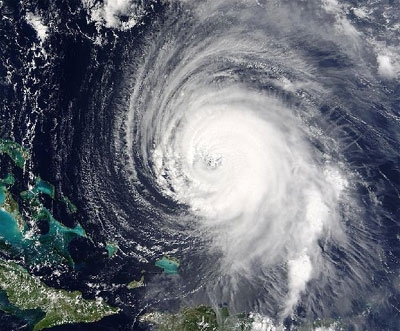
| A hurricane is a giant, spiralling tropical storm in the Atlantic Ocean that can reach wind speeds of over 257 km per hour and unleash more than nine trillion litres of rain! It begins as thunderstorms that are set off by moist air rising over the warm ocean. If the water is warm enough, the thunderstorms join together, growing bigger as they begin to spiral across the ocean. As the hurricane grows, it spins faster and tighter around its centre, or ‘eye’, which remains a very calm area of low pressure. A hurricane can be as much as 800 km across and can take l8 hours to pass over. In the northern Indian Ocean hurricanes are known as cyclones and in the western Pacific Ocean, as typhoons. |
Hurricanes are large, swirling storms. They produce winds of 119 kilometers per hour (74 mph) or higher. That’s faster than a cheetah, the fastest animal on land. Winds from a hurricane can damage buildings and trees.
Hurricanes form over warm ocean waters. Sometimes they strike land. When a hurricane reaches land, it pushes a wall of ocean water ashore. This wall of water is called a storm surge. Heavy rain and storm surge from a hurricane can cause flooding.
Once a hurricane forms, weather forecasters predict its path. They also predict how strong it will get. This information helps people get ready for the storm.
There are five types, or categories, of hurricanes. The scale of categories is called the Saffir-Simpson Hurricane Scale. The categories are based on wind speed.
- Category 1: Winds 119-153 km/hr (74-95 mph) – faster than a cheetah
- Category 2: Winds 154-177 km/hr (96-110 mph) – as fast or faster than a baseball pitcher’s fastball
- Category 3: Winds 178-208 km/hr (111-129 mph) – similar, or close, to the serving speed of many professional tennis players
- Category 4: Winds 209-251 km/hr (130-156 mph) – faster than the world’s fastest rollercoaster
- Category 5: Winds more than 252 km/hr (157 mph) – similar, or close, to the speed of some high-speed trains
Credit: NASA
Picture credit: NASA





